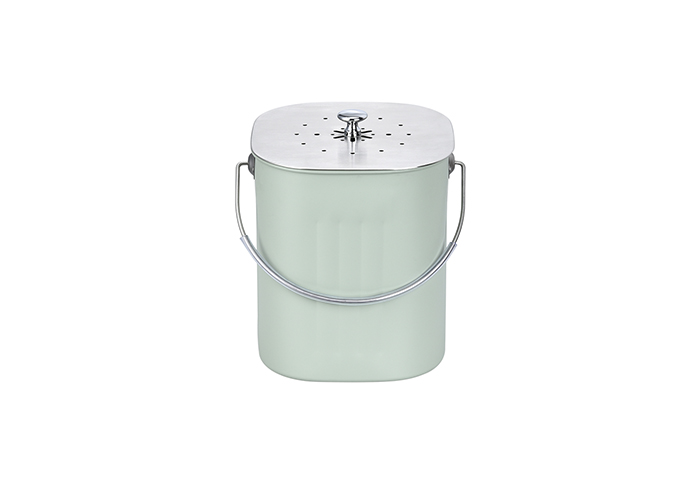What types of compost bin are there?
Composting has emerged as a key practice for individuals and households aiming to reduce waste, contribute to environmental sustainability, and enrich their gardens with nutrient-rich soil. Compost bins are the cornerstone of this eco-friendly endeavor, providing a dedicated space for organic waste to break down and transform into valuable compost. In this comprehensive guide, we explore the diverse types of compost bins available, each designed to cater to specific needs, space constraints, and preferences of those committed to embracing a greener lifestyle. Learn more about What is a Compost Bin?

Types of Compost Bins:
-
Backyard Compost Bins: Backyard compost bins are the most traditional and widely used type. These bins come in various designs, such as tumblers, stationary bins, or open piles. They are suitable for individuals with ample outdoor space, allowing for the decomposition of a wide range of organic materials, including kitchen scraps and yard waste.
-
Tumbling Compost Bins: Tumbling compost bins are designed for easy turning or rotating, facilitating the aeration of compost materials. This design accelerates the composting process by promoting better oxygen circulation. Tumbling bins are suitable for those who want a more efficient and convenient composting experience.
-
Worm Bins (Vermicomposting): Worm bins, also known as vermicomposting bins, use worms to break down organic matter into nutrient-rich compost. These bins are compact and can be kept indoors or on small balconies. Worm bins are ideal for individuals living in apartments or urban environments where outdoor space is limited.
-
Bokashi Compost Bins: Bokashi composting involves the fermentation of organic waste using a special type of bran. Bokashi bins are airtight containers that allow for anaerobic fermentation, producing a nutrient-rich liquid and pre-composted material. Bokashi bins are suitable for those who want to compost all types of kitchen waste, including meat and dairy.
-
In-Ground Compost Bins: In-ground compost bins involve burying organic waste directly in the soil, promoting natural decomposition. These bins are often placed in garden beds or designated composting areas. In-ground composting is suitable for those who want to integrate composting seamlessly into their garden.
-
Compact Compost Bins: Compact compost bins are designed for small spaces and indoor use. They often have a sealed design to prevent odors and pests, making them suitable for apartment dwellers or individuals without access to outdoor composting spaces. Compact bins are available in various materials, including plastic and stainless steel.
-
Dual-Chamber Compost Bins: Dual-chamber compost bins have two compartments, allowing users to fill one side while the other side is actively composting. This design facilitates a continuous composting process, ensuring a steady supply of nutrient-rich soil. Dual-chamber bins are suitable for those who want to manage their compost in a more organized manner.
-
Stationary Compost Bins: Stationary compost bins are non-moving containers that allow for the gradual decomposition of organic materials. These bins are suitable for individuals who prefer a low-maintenance composting solution and have the patience to wait for the natural breakdown of waste.
-
Rolling Compost Bins: Rolling compost bins feature wheels or a rolling mechanism, allowing users to easily move the bin to different locations. This design is convenient for individuals who want to distribute compost evenly in their garden or have limited space. Rolling bins often have aeration features for efficient composting.
-
Indoor Compost Bins: Indoor compost bins are specifically designed for kitchen use, allowing individuals to collect food scraps without odors or pests. These bins are often small, compact, and equipped with airtight lids. Indoor compost bins are ideal for those who want to minimize trips to an outdoor compost pile.
-
Metal Compost Bins: Metal compost bins are durable and can withstand various weather conditions. They are suitable for outdoor composting and often have features like ventilation holes to promote air circulation. Metal bins are an excellent choice for those looking for a robust and long-lasting composting solution.
-
Wooden Compost Bins: Wooden compost bins are aesthetically pleasing and blend well with garden surroundings. They are often used for backyard composting and can be DIY projects or purchased in various designs. Wooden bins are suitable for those who prioritize a natural and rustic look in their composting area.
-
Plastic Compost Bins: Plastic compost bins are lightweight, affordable, and resistant to the elements. They come in various shapes and sizes, catering to different composting needs. Plastic bins are suitable for outdoor composting and are often easy to assemble and move.
-
DIY Compost Bins: DIY compost bins involve creating a composting system using repurposed materials or constructing custom designs. These bins allow individuals to tailor their composting solution to their specific needs and available resources. DIY bins are suitable for those who enjoy hands-on projects and want a unique composting setup.
-
Electronic or Automatic Composters: Electronic or automatic composters use technology to expedite the composting process. These bins often have features such as heating elements, mixing mechanisms, and sensors to optimize composting conditions. Electronic composters are suitable for those who want a high-tech and efficient composting solution.
Choosing the Right Compost Bin:
Selecting the right compost bin depends on factors such as available space, lifestyle, and composting goals. Whether opting for a traditional backyard bin, a space-saving worm bin, or a high-tech electronic composter, the diverse range of compost bins ensures that individuals can find the perfect solution to fit their needs and contribute to a more sustainable and eco-friendly lifestyle. As composting continues to gain popularity as a simple yet impactful way to reduce waste and nurture the environment, choosing the right compost bin becomes a crucial step toward fostering a greener future.
